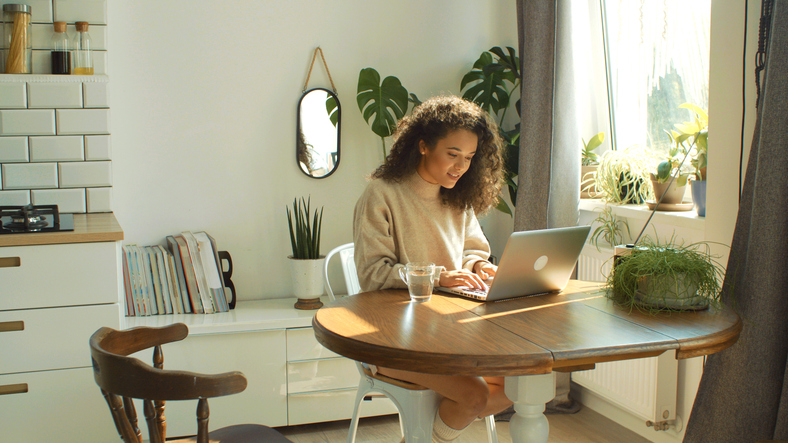Today's custom door power players are questioning how they can empower end users to navigate an array of product options with inspiration, clarity and relevance. The goal is a modern buying experience that perfectly blends online flexibility, visual commerce, and a seamless transition from digital exploration to sales and support interactions.
To establish what exactly the ideal custom door buying journey looks like, we contracted with an independent shopper network and enlisted unbiased consumers to design and purchase a custom door. These findings and personal accounts guided our framework and recommendations.* (methodology will be listed at the end)
To start, we needed a benchmark–a clear understanding of what “great” looks like for this industry.
The Ideal Custom Door Buying Experience
The 5 Key Components to Nail Along the Path to Purchase

The Inspiration
Make Search Effortless: A great custom door buying experience begins with inspiration. The goal for brands is to simplify the process for buyers, making it effortless to search and find products while assuring the shopper that they’ve come to the right place.
The Hook
Bolster Buyer Confidence: The hook is about fully captivating and engaging prospective buyers. Brands should offer a comprehensive door configuration experience that piques interest and boosts confidence in choices, making buyers feel informed and excited about their custom door options.
The Hand-Off
Guide Customers to the Experts: After buyers have explored the website and engaged with products, they need a seamless path to sales or support. The hand-off is an effortless transition that maintains momentum for the buyer.
The Fast Follow
Offer Timely Responsiveness: Next comes the fast follow - within 24 hours of initial contact, a brand’s salesperson or dealer should provide guidance and support, addressing incoming buyer inquiries promptly to maintain interest.
The Resolution
Deliver Satisfaction: Finally, the resolution, a phase with various buyer paths. While it may result in a direct purchase, it's more likely to end in a home visit or a trip to the showroom to finalize the deal. Brands need to ensure buyers are met with the utmost clarity for every possible path.
Once we established the ideal journey we assessed how the industry as a whole is doing to achieve meet these expectations.
How’s the Custom Door Industry Doing?
The Inspiration:

Gap Between Buyer Demand for Self-Service and Brand Delivery
The inspiration phase builds buyer confidence, sparks interest, and creates trust. Our study reveals stark challenges on this front: shoppers voiced their struggle to locate the right product.
ONLY
ONLY
of shoppers were satisfied with the ability to find the product they were looking for.
One buyer described a website as "very messy," pointing out the need to navigate extensively to discover the 'door designer' option. This experience forced them to seek manual assistance by clicking on ‘Contact Support.’ The frustrating experience was further compounded by a non-functional 'Door Designer' app, which forced the buyer to contact support only to obtain vital information.
Such experiences, where customers are left feeling lost, drive forward the need for more inspiring interfaces to facilitate a clear buying journey.
When configuration was offered, it was not clear where to find it in 66% of cases.

The Hook:

of shoppers were able to access and utilize a configurator during their experience
Product Configurators a Missed Opportunity
Buyer frustrations underscore the need for advanced product configurator functionality.
With custom doors comes many configuration possibilities - from door size and width to material finishes and glass tempering options. Buyers want to explore all options digitally and upfront with a comprehensive product configurator, designed to connect buyers to products and foster early brand engagement.
Our study revealed two key insights.
- One, product configurators are extremely under-utilized in the custom doors industry - a mere 25% of shoppers were able to access and utilize a configurator during their experience.
- Two, product configurators need bolstering. Among those shoppers who were able to configure products, only 33% reported satisfaction with their experience, indicating room for improvement with configurator functionality and usability.
As one frustrated shopper attests, “The Door Designer included on the website was not accomplishing anything or displaying an image or price." This user experience gap highlights the importance of a fully functional and visually satisfying 3D experience to empower buyers in their decision-making process.
In addition to configurator accessibility and usability, pricing transparency poses another hurdle.
ONLY
ONLY
of shoppers were able to obtain pricing information online, leaving most buyers in the dark. Over 80% of shoppers were redirected to an email web form, an experience that can be frustrating and counterproductive.
One user expressed, "The site did not point me toward where I could find a price." There is need for improvement in both configurator functionality and pricing transparency to elevate the custom door buying experience and provide buyers with the confidence to continue their journey.
Three-quarters of buyers were unable to configure the product, indicating a substantial need for improved product configurator accessibility.
For those who could configure products, 93% explored three or more configurations, highlighting the complexity of custom door choices.
With regards to configurator ease of use, 40% found it easy, 20% deemed it difficult, and another 40% remained neutral, emphasizing the need for enhanced configurator user-friendliness.
The Hand-Off:

ONLY
of shoppers reported being offered chat support, leaving most with unanswered questions
A Digital-to-Human Dilemma
Shopper dissatisfaction and the hand-off fallout.
The hand-off phase serves as the vital link in connecting the digital self-serve experience with the subsequent sales and support interactions necessary for closing business. The data shows areas for improvement in the hand-off. Only 15% of shoppers reported being offered chat support, leaving most with unanswered questions. As one shopper's experience illustrates, timely responses are imperative for an effective chat experience.
Another hand-off technique involves redirection to a web form, an option most shoppers were offered. Yet, the challenge lies in ensuring that this hand-off point is not an obstacle but a clear gateway, guiding customers effectively toward personalized support. The custom door industry may benefit from a more streamlined and responsive approach to the hand-off, to bridge the digital-to-human gap and ensure that customer inquiries are promptly addressed.
Over ¼ of shoppers who were neither offered configuration nor a web form encountered challenges in finding answers to their custom door inquiries on the website.

The Fast Follow:

of customers who submitted online forms did NOT receive a personal follow-up within 24 hours
Rapid Response Matters
Earn or churn with a buyer response in <24 hours.
The hand-off from the digital experience to human interaction is only as successful as how quickly the company can respond to the buyer in the fast follow phase. Delays could lead the buyer to move on to other options.
One shopper, after initiating contact was “very pleased” with a prompt auto-response and detailed follow-up from one custom doors brand within 24 hours. The quick response allowed the shopper to understand the necessity of working with an outside vendor. Another buyer received a same-day response, providing information about contacting a local dealer, though they expressed that they “still could have used more details.” In both cases, the speed of the reply played a substantial role in shaping the buyers' perceptions.
The importance of fast follow significantly impacts buyer confidence. One buyer, who did not receive an email response within a week, expressed how this would deter them from choosing a particular brand over others. Another buyer, after submitting a contact form to inquire about pricing, waited several days without any response and indicated their disappointment.
Fast follow maintains buyer engagement and confidence, making it a vital phase in the custom door buying experience.

“Even though I could not go through a customization and quote process on the website, which would have been ideal, I did receive two email responses within 24 hours of submitting my ticket. I gathered that to get pricing, I would have to call [the sales rep] and discuss things with him further."
The Resolution:

Nearly ½ of buyers are unlikely to visit a showroom for purchase based on their web experience.
Navigating Complex Paths to Purchase
Buyers call for more comprehensive support.
Buyers need a straightforward path forward to purchase. In this final stage, shoppers find themselves faced with multiple ways to proceed with their custom door selection. Direction and support must be available for every buyer path.
ONLY
ONLY
of buyers were directed to a specific showroom to continue the buying experience.
Only 13% of our shoppers were directed to a specific showroom as the next step in their buying experience. And, when assessing the likelihood of visiting a showroom for the purchase based on their digital experience, the distribution is telling—only 13% found it "very likely," while a substantial 45% fell into the "unlikely" and "very unlikely" categories.
Some shoppers expressed appreciation for responsive support, with one buyer noting that assistance and dealer recommendations could sway their decision toward a particular brand. Others highlight the need for more comprehensive information, as speed in responding alone may not suffice.
Missing pricing information adds another layer of doubt, as contacting a dealer becomes a mandatory step in collecting essential sale details. Shoppers emphasized that clarity in website function and responsiveness in chat support shapes their perceptions. The challenge is in striking a balance between providing informative resources and responsive support to create a satisfying buying experience for customers.

Conclusion
Capitalize on Market Potential with Enhanced Buyer Experiences
4.5 out of 10
Shoppers’ overall average rating for digital buying experience was 4.5 out of 10 – signaling significant room for improvement across the industry.
Our Custom Door Online Buying Experience Survey reveals shifting shopper expectations. Today’s discerning buyers are seeking an experience that seamlessly blends engaging digital experiences with the assurance of personal expertise.
Even with complex products buyers expect an eCommerce-like digital experience that facilitates self-service. And, more importantly, there is significant room for improvement here in the industry. Shopper experiences unveiled that many brands are yet to fully embrace a digital experience, with many buyers struggling to find and/or use product configurators. Timely responsiveness from brands proved to be a major factor in maintaining shopper interest, as well as pricing transparency and easily navigating the path to purchase are lacking areas in the custom door industry.
Great opportunity exists for custom door brands that are willing to invest in their digital product experience. With a seamless and visually engaging buyer journey, brands can differentiate themselves. Our study indicates that there is substantial room for improvement in this industry, with the average shopper experience rating at only 4.5 out of 10.
The custom door market has the potential to thrive by embracing new buyer demands and harmonizing the complete shopper experience across all five stages. If brands adapt to changing buyer expectations, they will be well positioned to win in the market.
*Research Methodology: Threekit teamed up with independent shopping research company, Sinclair Customer Metrics, to uncover buying experience insights for ten of the industry’s top door companies: JELD-WEN, Pella, Andersen, Masonite, Therma-Tru, Marvin, Simpson, Tru-Stile, Kolbe and Weather Shield. Several participants were tasked with visiting all ten companies’ websites and rating their digital experience, including finding the product, exploring its features, configuring it and getting assistance to complete the purchase.